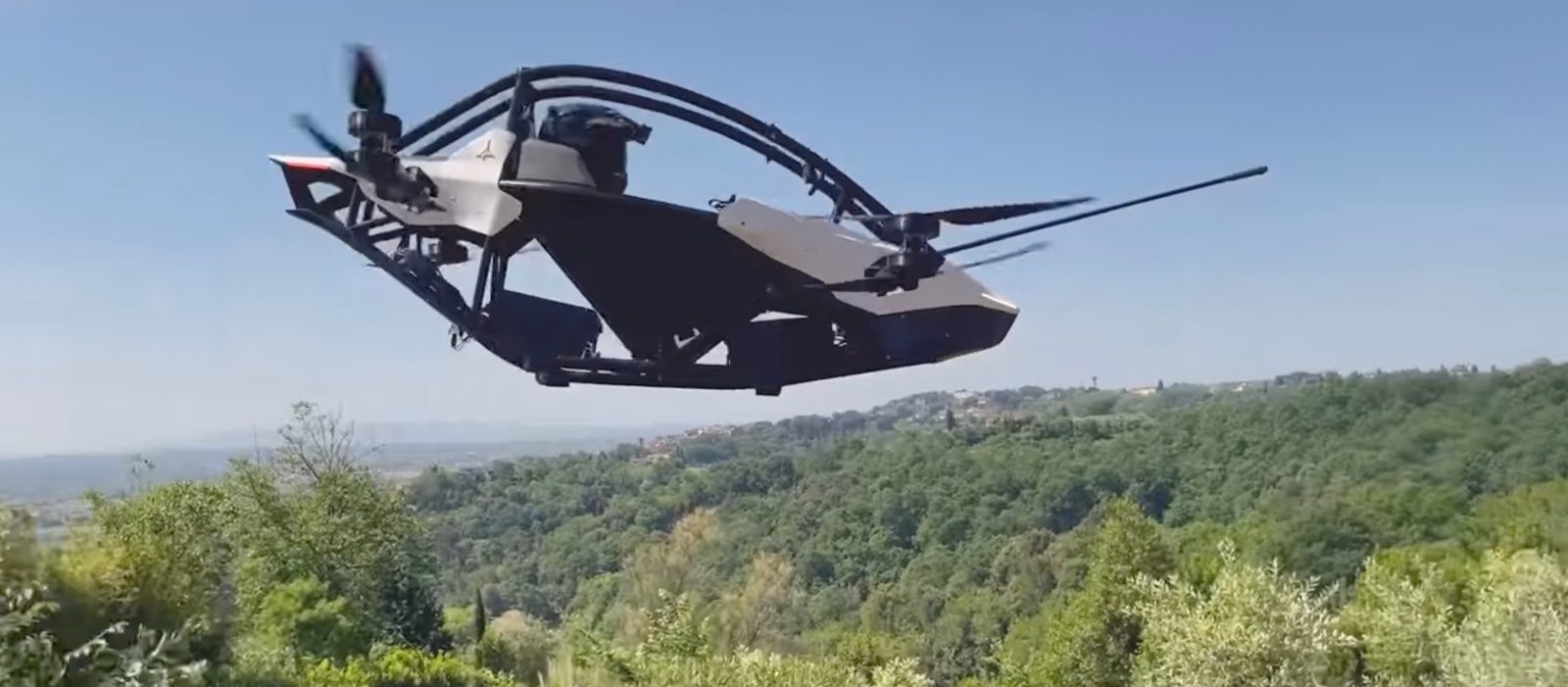
Awaiting delivery of its first flying cars to customers next year, Swedish electric vertical takeoff and landing aircraft (eVTOL) company Jetson has given the world a look at what future commutes to work may be like – this time with its CEO strapped in at the commands.
Jetson released a video on its Facebook page of company boss and inventor of its ONE flying car, Tomasz Patan, piloting his eVTOL creation to the office. The accompanying text noted the craft cut his travel time (presumably compared to usual road options) by nearly 90%. There were no details on the distance or total duration of the commute, but the film did offer lots of snazzy footage of the one-person conveyance navigating between utility lines and over treetops before touching down at the company’s HQ.
“We are incredibly proud to share that after months of rigorous trial and testing we completed the world’s first EVTOL commute,” the accompanying message read. “On 21.05.2022 co-founder and Jetson ONE inventor Tomasz Patan flew from home to work. This reduced our commute time by an impressive 88%. A momentous occasion for the emerging EVTOL sector. As pioneers, we are focused on further pushing the envelope during this aviation Renaissance.”
Read: Sold-out Swedish Jetson ONE personal eVTOL set for delivery in 2022
“Revolution” may be a more appropriate word for what the company has in mind, given its slogan, “Everyone is a pilot.” Designed and produced as a simple to use ultralight vehicle, the Jetson flying car will not require piloting certification, allowing pretty much anyone deciding to adopt the eVTOL innovation to follow Patan’s commuting lead.
The craft can reach maximum speeds of 63 mph, but limits users to 20-minute flights before the batteries need recharging. Its payload capacity of 210 lbs. will also require stouter pilots to diet before climbing into the cockpit. Once they do, onboard LiDAR sensors will ensure obstacle avoidance, and a triple-redundant flight computer – and the craft’s ability to continue flying with the loss of a motor – will further enhance the ease and safety of operation.
The only real obstacle to anyone becoming a pilot of the Jetson ONE flying car is the cost of the eVTOL ride: $22,000 to order, and a total of $92,000 to take delivery. That price tag, far more than user weight limits, will probably be the biggest factor reducing the ranks of “everyone” becoming pilots.
Read: After Jetson, Air One enters personal eVTOL vehicle market
Even people able and ready to shell out that kind of cash for one of the futuristic vehicles will have a long wait to endure, however. The first batch of Jetson ONE flying cars to be delivered in 2022 quickly sold out and of the vintage being readied for 2023, just three of the 105 eVTOL gems are still available.
To fill that time, prospective buyers and less affluent enthusiasts alike can get a feel of the Jetson ONE experience from the new commute video, featuring shots from the pilot’s perspective as well as footage above, aside, and in front of the eVTOL car shot by a drone flying to capture its progress.
FTC: We use income earning auto affiliate links. More.

Comments